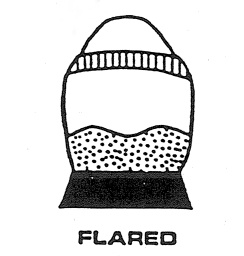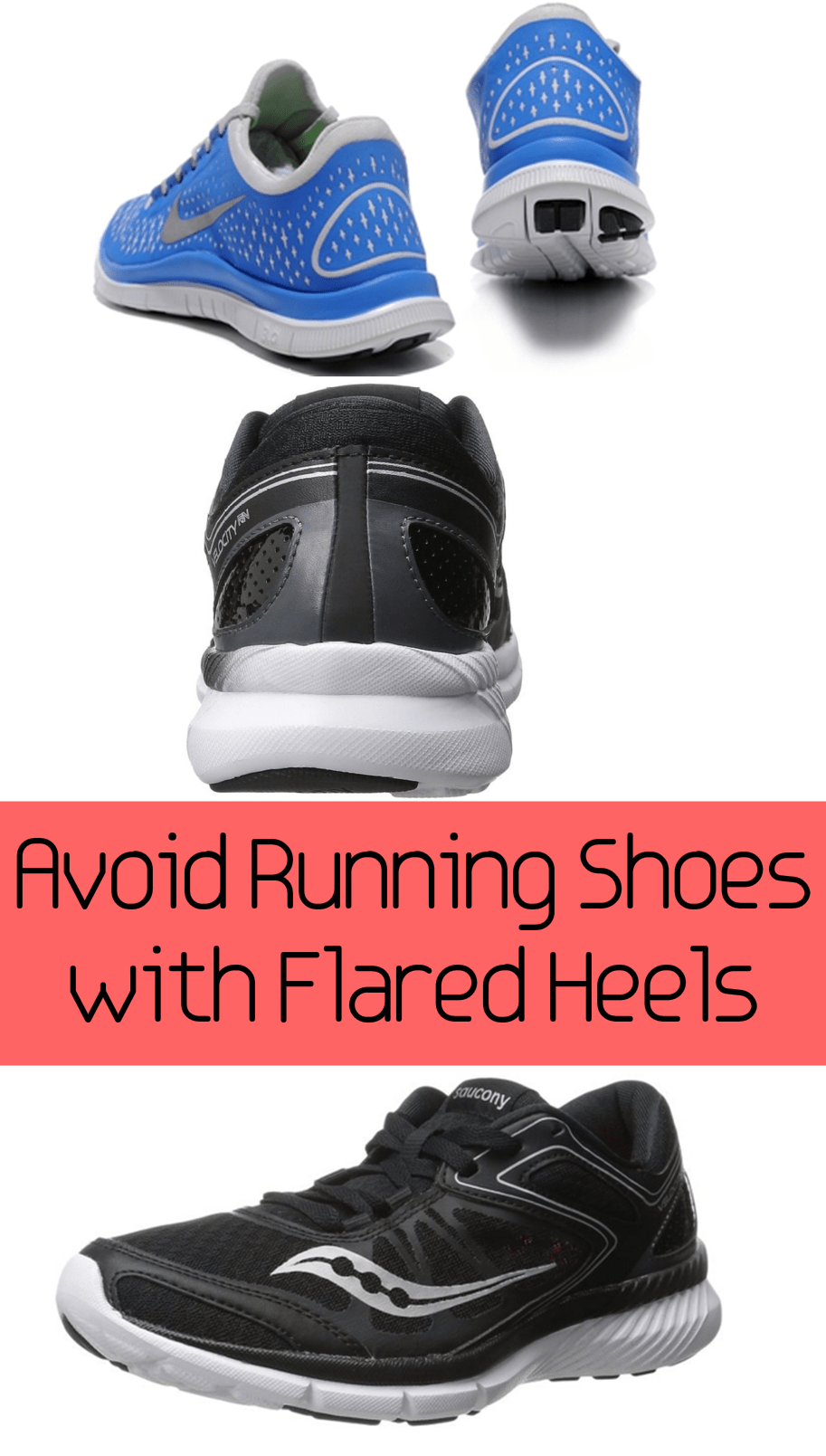Most running shoes have a flared heel that is thickly cushioned. Heel flare is considered important because it is supposed to minimize pronation and provide impact protection during running. However, a new study found evidence to the contrary in that flared heel running shoes increase inappropriate ankle movements at touchdown during running.
Flare Heeled Running Shoes Increase Ankle Movements
 A study by Nigg and Bahlsen found the opposite. The researchers compared the effects of 3 heel construction types: conventional heel flare, rounded heel, and no heel flare on rearfoot movements and impact forces in heel strike runners.
A study by Nigg and Bahlsen found the opposite. The researchers compared the effects of 3 heel construction types: conventional heel flare, rounded heel, and no heel flare on rearfoot movements and impact forces in heel strike runners.
The researchers found that runners who ran in shoes constructed with the conventional heel flare showed adverse events at touchdown.
- The conventional heel flare resulted in higher initial joint pronation compared to runners who ran in running shoes with no heel flare.
- The conventional heel flare also produced the highest touchdown velocity of the heel, the highest vertical impact force peaks, and the highest maximum vertical loading rate compared to running shoes with rounded heels.
The results suggests that conventional heel flare does not blunt external impact forces or irregular rearfoot movements during running, but disables a runner from landing with normal impact resistance.
Runners, unaware of their biomechanical onslaught caused by conventional heel flare, inflict damage that accumulates and contributes to progressive injury during running.
Footwear manufacturers condition runners to accept that heel stabilizers, such as the conventional heel flare, is needed to avoid overpronation. But, runners susceptible to overpronation are exposed to greater rates of loading and impact forces in running shoes with flared heels.
Studies conducted over the past few years show that pure minimalist shoes, not only helps curb overpronation by improving foot strength, but scales down vertical impact forces by reinforcing a non-heel strike landing.
More From Run Forefoot:
Proprioception of the Feet – Tactile feedback on the feet important for ankle function.
Walk Healthier – Best Barefoot-like shoes for walking.
Knee Osteoarthritis – If you are wearing cushioned running shoes to protect your knees, stop that today!
Running Barefoot Guide – Take your barefoot running training to a higher level.
Barefoot and Injured – How barefoot runners can easily avoid injury.
References:
Nigg BM and Bahlsen AH. Influence of heel flare and midsole construction on pronation, supination, and impact force for heel-toe running. Int J Sports Med, 1988; 4, 205-219.
Bretta Riches
BSc Neurobiology; MSc Biomechanics candidate, ultra minimalist runner & founder of RunForefoot. I was a heel striker, always injured. I was inspired by the great Tirunesh Dibaba to try forefoot running. Now, I'm injury free. This is why I launched Run Forefoot, to advocate the health & performance benefits of forefoot running and to raise awareness on the dangers of heel striking, because the world needs to know.
Latest posts by Bretta Riches (see all)
- Does Foot Strike Really Matter in Running? YES! - 17/04/2024
- Heel Lifts Increase Injury in Runners - 16/04/2024
- Are Minimalist Shoes Good for Seniors? YES! - 14/04/2024


not sure i’d call an article from 1988 “recent”…also an important note from the ABSTRACT:
“Changes in lateral heel flare do have an effect on vertical impact force peaks if the midsole is relatively hard BUT not if the midsole is relatively soft.”